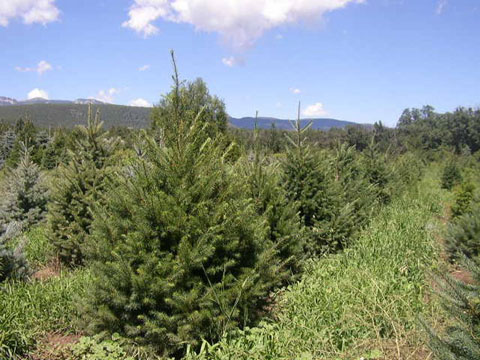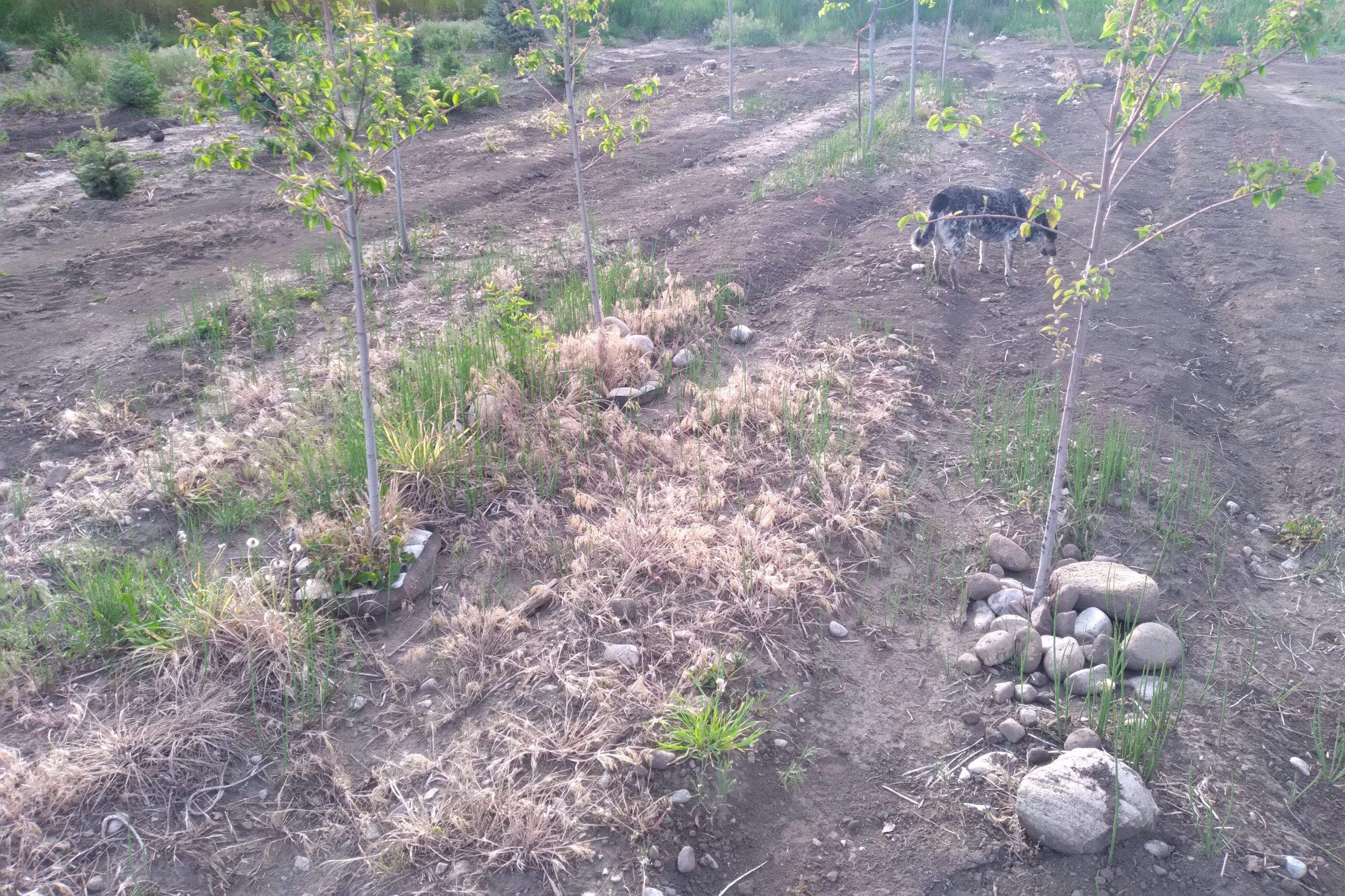Dan Cassidy of Cassidy Farms in northeastern New Mexico has tried growing trees and shrubs in the ground for his balled-and-burlapped (b&b) inventory, as well as in root-control bags and containers. At 7,400 ft in Cleveland, N.M., approximately 44 miles from Taos, his nursery grows “a little bit of everything” including Spruce, Aspen, and cottonwoods.
“Some growers like containers, and some don’t. Other nurseries don’t accept grow bags,” Cassidy said.
For his location and way of growing, he prefers b&b but uses grow bags in areas of his property that are rocky 18 to 20 inches below the surface, making planting and harvesting a b&b tree extremely difficult. “I don’t want to give up that ground, so I throw a grow bag in there,” he explained.

“I’m not much of a container guy. Containers are too much work for me in my system,” he said. “Containers are really nice for sure, but at my elevation, I have to do quite a bit of work in the winter to keep them warm and healthy with nutrients and water and not worry about blow-overs.”
Christmas trees are one species that he does grow in 1g containers or as bare root placed six to eight inches into the ground, because he can grow them in rocky areas as well, and then sell them later. “That works well for me because I don’t have to waste any ground. Instead of leaving it fallow, I can do something with it,” he said.
He selects hard-to-dig trees and shrubs like locusts to grow in bags. Shade trees, aspen, Canada red cherries, and lilacs all grow well in bags, but he noticed that the purple lilacs outgrow the bags pretty quickly. Though he can get a 5 to 6 ft grade lilac out of an 18 in grow bag.
“Any plant can be put in a grow bag. I happen to use those particular plants. Part of this is a little bit of an experiment,” he revealed.
For his climate and weather, grow bags work well year-round in the ground rather than on the surface. Typically, he makes holes 14 inches deep and places 18-inch bags inside, leaving two inches of the fabric above ground to identify the edges of the bags. He fills the bags with the soil removed from the holes, and plants the trees and shrubs inside.

He recommends watering by drip system rather than flood irrigation if possible, but when using flood irrigating, the grower needs to ensure the water goes right up against the bags so the water can infiltrate the bags well underground.
On the other hand, he has found it easier to dig out bagged trees in ground that has been flood irrigated. So, he suggested that a combination of drip and flood irrigation would provide both good moisture as well as an easier harvesting process.
“The plant generally doesn’t grow as fast as with b&b. Making sure the plant has enough room is important, so they need to be spaced accordingly,” he noted.
He has used 21-inch bags, but they are a little more labor intensive as they take an auger to get out of the ground.
“You don’t want to get the plant too big and don’t want the roots growing over the top of the grow bag. In an 18-inch grow bag, you don’t want a four-inch trunk,” he said. “When a plant outgrows a bag, you can take it out, put it directly into the ground and then b&b it, but that process is labor intensive. You can also take the plant out of the bag and put it in a box or container, but those are usually good for retailers and I only wholesale and re-wholesale my plants.”
He has had success growing trees up to a two-inch caliper or about six-feet tall in 18-inch bags, which has been a popular size with his customers. “I’ve had a profitable return on investment when growing in that size, so it’s what works for us,” he concluded.

Comparison of the Advantages of Three Tree-Growing Methods
Stan Brown has worked at Alameda Wholesale Nursery in Englewood, Colo. since 1964. Brown’s knowledge, experience and love for trees is well known. When Colorado Nursery & Greenhouse Association needed to pick a guide for the 2019 Plant Walk at the Regis University Arboretum, he was the obvious choice to share stories about one of the state’s best collections of mature and rare trees with 1,300 trees spanning 300 species.
When asked about the benefits of growing trees in different ways, Brown was quick to provide a succinct list of the specific advantages of container, root-control bag-grown and balled-and-burlapped (b&b) trees.

CONTAINERS
- Better for smaller plants from 1g to 1.75 inches
- Generally lighter, easier to load and ship
- Generally more economical
- Doesn’t need to be mulched in
- More attractive “package”
ROOT-CONTROL BAGS
- Generally more economical than B&B
- Loses fewer roots when transplanting
- More economical shipping
- Works better with smaller plant material
BALLED & BURLAPPED
- Considered by many to be of higher quality
- Works better for larger trees (2 to 5 inches)
- Adapts more easily to watering schedules in a landscape
- Doesn’t fall over as easy when mulched in
- More standard in the industry for 2 to 5-inch trees
What is your experience?
CNGA is interested in learning from our members about your experiences with grow bags, containers, bare root, and balled and burlapped trees. Please email info@coloradonga.org with your insights about the pros and cons, the best uses of these different growing methods, and how you have used them effectively to be profitable and produce quality trees.










